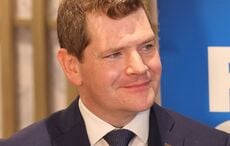Rory McIlroy has thanked former President Bill Clinton for his role in bringing peace to Ireland which he says meant he could grow up normally and become the world’s No. 1 golfer.
In a long feature in The New York Times magazine written by Charles Siebert set for publication this Sunday, the week before the US Masters, McIlroy says meeting the former president and playing golf with him was a highlight of his life.
The article also points out that the McIlroy family suffered a major loss in The Troubles when a grand uncle was killed by Loyalists after he moved into a Protestant area.
The article states that there is “in the steely resolve McIlroy often exhibits on the golf course, a deep-rooted link to the very Troubles from which he and the other so-called children of Clinton emerged largely unscathed.”
Siebert notes that McIlroy had just turned 9 when the Good Friday Agreement that the Clinton administration helped to broker was approved, and he’s “deeply appreciative of the relative peace and stability in which he and his career were able to thrive.”
As a sign of how different it all is, an aide to McIlroy showed the reporter a 40 foot high portrait of Rory McIlroy painted on a mural in Belfast
“'In years gone by, the sides of those houses would have been painted with sectarian murals and flags and all that sort of stuff,' McIlroy said when I mentioned the mural to him in New York. 'So it’s very symbolic.' He thought for a moment. 'You know my generation, we don’t care about any of that stuff'.”
The Times piece notes that McIlroy met Bill Clinton for the first time in 2013 in Dublin and they played a round of golf.
“Man loves a mulligan,” McIlroy told the Times.
“No, I mean on every other shot. But, hey, he’s the president.” They had dinner that night. McIlroy told Siebert and that at one point “he stood up and thanked Clinton for making his country a better place to grow up.
“I think for me it has kept me very grounded, I’ll never forget where I’m from. . . . I’ll always gravitate back toward home-home as I call it. There’s home, and there’s home-home.”




Comments